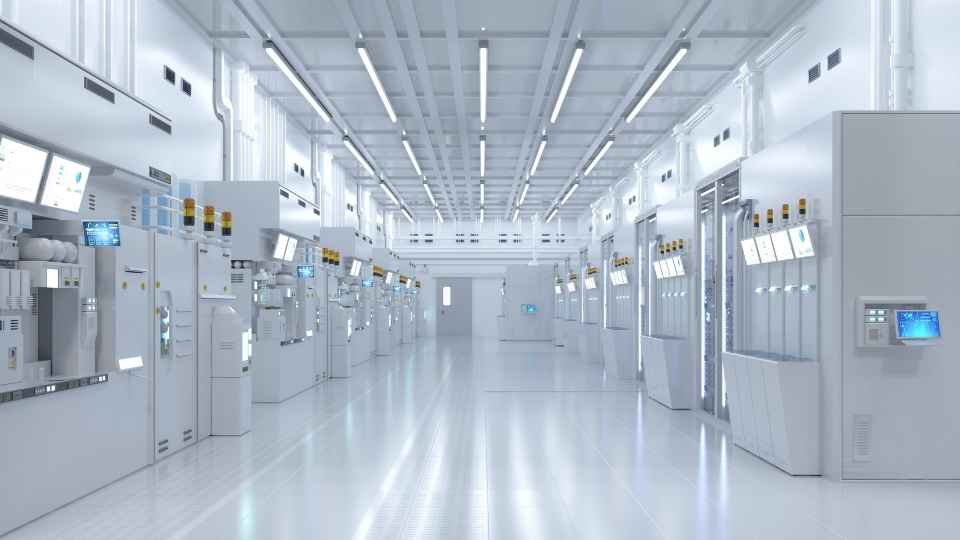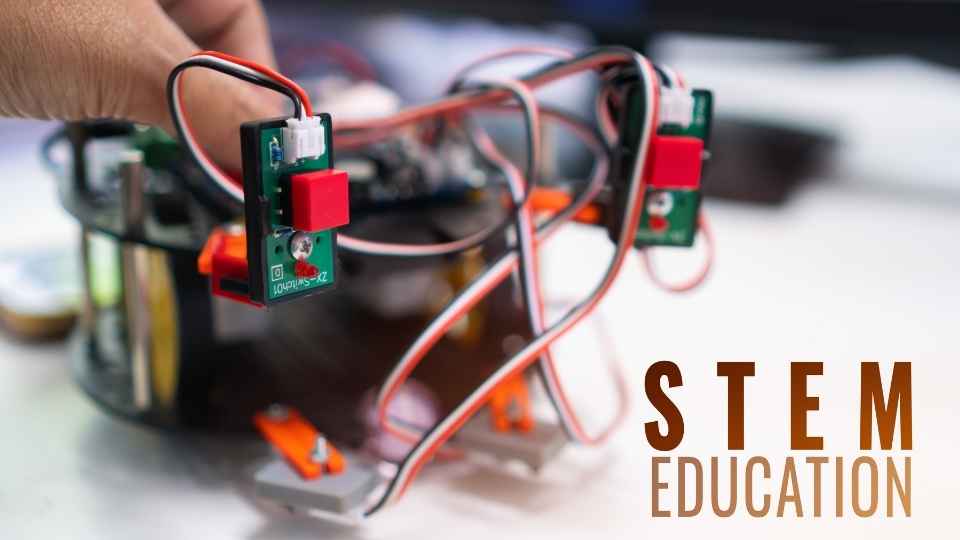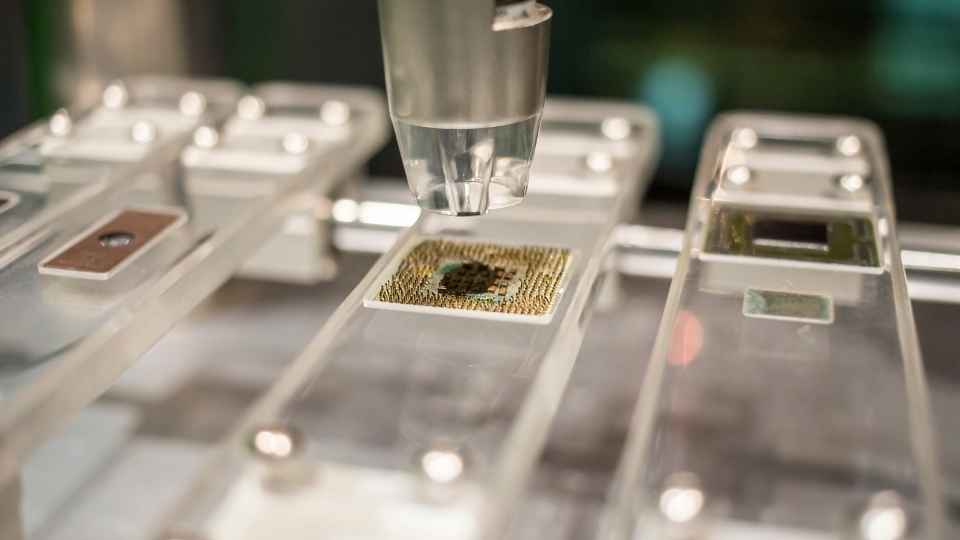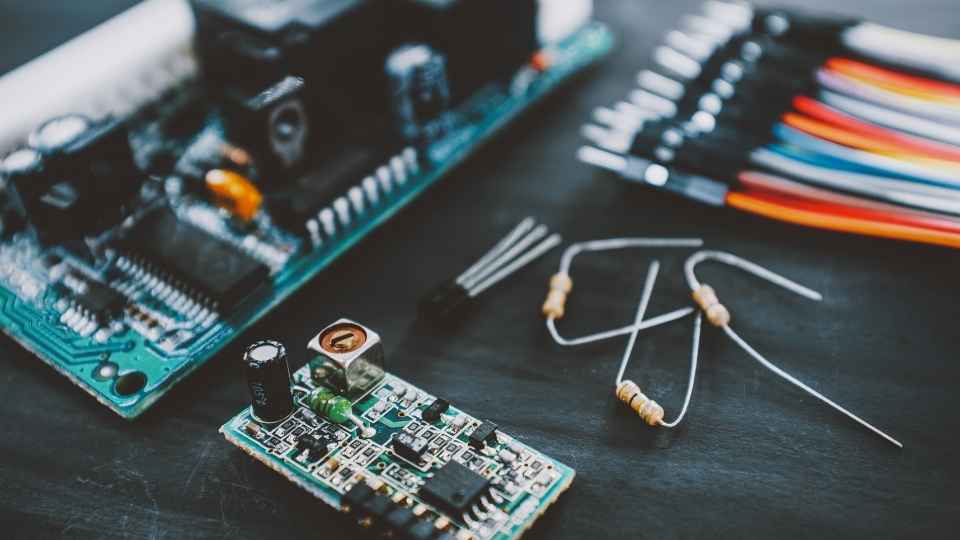
In the ever-evolving landscape of technology, microcontrollers stand as the unsung heroes, quietly powering an array of devices that have become integral to our daily lives. From smartphones to smart home systems, these tiny yet mighty devices serve as the backbone of countless innovations.
Imagine them as the orchestrators behind a symphony of gadgets, each playing its unique role harmoniously.
In this article, we will explore the fascinating world of microcontrollers and delve into their fundamentals, unlocking their true potential and revealing how they have revolutionized our modern world.
Key Takeaways
- Microcontrollers combine a microprocessor core with memory and peripherals, making them versatile and essential in various applications.
- Microcontrollers have input/output methods, different types of memory, internal clock signals, interrupts, and power management features.
- They are used in industries such as automotive, consumer electronics, medical devices, industrial automation, and home automation.
- Microcontrollers offer advantages such as flexibility in designing, cost-effectiveness, energy efficiency, scalability, and reliability.
The Fundamentals of Microcontrollers
Microcontrollers are integrated circuits that combine a microprocessor core with memory and peripherals, forming the fundamental building blocks of embedded systems. These compact devices offer a wide range of functionalities and features, making them essential in various applications.
At their core, microcontrollers consist of a central processing unit (CPU) responsible for executing instructions and managing data, along with memory units for storing program code and data. They also include input/output (I/O) ports to communicate with external devices, such as sensors, actuators, or displays. Additionally, microcontrollers often incorporate specialized peripherals like timers, analog-to-digital converters (ADCs), and communication interfaces like UART or SPI to enable seamless interaction with the outside world.
With their versatility and flexibility, microcontrollers empower developers to create innovative solutions across industries ranging from automotive and healthcare to home automation and consumer electronics.
Understanding the Principles of MCUs
By comprehending the fundamental principles underlying these electronic devices, one can gain a deeper understanding of their capabilities and applications. Microcontrollers (MCUs) are at the heart of many modern technologies and products, and grasping their principles is essential for unlocking their full potential.

Here are five key concepts to consider:
Input/Output (I/O): MCUs interact with the external world through various input and output methods.
Memory: MCUs have different types of memory to store program instructions, data, and variables.
Clock: MCUs rely on an internal clock signal for precise timing and synchronization.
Interrupts: They allow MCUs to respond quickly to external events while performing other tasks.
Power Management: Efficient power usage is crucial in mobile or battery-powered applications.
Understanding these principles will provide you with a solid foundation as we dive into exploring the world of microcontrollers further.

Exploring the World of Microcontrollers
As we delve into the world of microcontrollers, it is important to understand their intricacies and capabilities.
Microcontrollers are small, integrated circuits that contain a processor core, memory, and input/output peripherals on a single chip.
They are designed to execute specific tasks efficiently and reliably, making them ideal for a wide range of applications across various industries.
Features of Microcontrollers
One important aspect to consider when exploring the world of microcontrollers is understanding the various features they offer. These features play a crucial role in determining the capabilities and functionality of a microcontroller.
Here are some key features that make microcontrollers an essential component in electronic systems:
Processing Power: Microcontrollers come with different processing power options, allowing developers to choose one that suits their project requirements.
Memory: The amount of memory available on a microcontroller affects its ability to store and process data efficiently.

Peripherals: Microcontrollers are equipped with various built-in peripherals such as timers, UARTs, SPI, I2C interfaces, ADCs, etc., making them versatile for interfacing with external components.
Power Management: Efficient power management features enable microcontrollers to operate on low power consumption and extend battery life.
Connectivity Options: With integrated communication interfaces like Ethernet, Wi-Fi, Bluetooth, and USB, microcontrollers can easily connect to other devices or networks.
Understanding these features empowers developers to select the most suitable microcontroller for their projects while enjoying the freedom and flexibility it offers.
Applications and Uses
The applications and uses of microcontrollers span across various industries. In the automotive industry, microcontrollers are used in engine control units (ECUs), safety systems like airbags and anti-lock braking systems (ABS), as well as entertainment systems.
Consumer electronics rely heavily on microcontrollers for functions such as display control, audio processing, user interface interaction, and power management.
Medical devices utilize microcontrollers for monitoring patient vital signs, controlling drug delivery systems, and managing medical imaging equipment.

Industrial automation benefits from microcontrollers by enabling precise control of machinery and processes in manufacturing plants.
Microcontroller-based systems also find applications in home automation for tasks like controlling lighting or appliances remotely.
With their versatility and adaptability to different industries' needs, microcontrollers have become an integral part of modern technology development.
Advantages Over Other Technologies
Advantages of using microcontrollers over alternative technologies include their compact size, low power consumption, and ability to integrate multiple functions onto a single chip. These advantages make microcontrollers an ideal choice for a wide range of applications.
Here are five key benefits of using microcontrollers:
Flexibility: Microcontrollers offer the freedom to design and customize hardware and software solutions according to specific requirements.
Cost-effectiveness: Due to their integration capabilities, microcontrollers eliminate the need for additional components, reducing overall system costs.

Efficiency: With their low power consumption, microcontrollers provide energy-efficient solutions that prolong battery life and reduce operational costs.
Scalability: Microcontroller platforms allow for easy scalability, enabling developers to start with a basic configuration and expand functionality as needed.
Reliability: Microcontroller systems are highly reliable due to their robust design, making them suitable for critical applications in various industries.
How Microcontrollers Work
Microcontrollers are small, integrated circuits that contain a CPU, memory, and various input/output peripherals. They work by processing data internally using the CPU and manipulating external devices through input and output operations.
Microcontrollers are designed to be embedded within larger systems, allowing for seamless integration into various applications such as consumer electronics, automotive systems, and industrial automation.
Internal Data Processing
Internal data processing is a crucial aspect of microcontroller functionality, allowing for efficient and accurate execution of tasks. The microcontroller's ability to process data internally enables it to carry out complex computations, control external devices, and respond to various inputs.
Here are five key points that highlight the importance of internal data processing in microcontrollers:

Fast and reliable execution: Microcontrollers can quickly process data within their internal memory, enabling them to perform tasks with minimal delay.
Reduced power consumption: Internal data processing minimizes the need for frequent communication with external devices, leading to lower power consumption.
Real-time responsiveness: By processing data internally, microcontrollers can promptly respond to real-time events and make critical decisions on the fly.
Simplified system design: Internal data processing allows for a more compact system design by eliminating the need for additional external components or processors.
Enhanced security: By keeping sensitive data within its internal memory, a microcontroller can provide better protection against unauthorized access or tampering.
Overall, internal data processing plays a vital role in unlocking the full potential of microcontrollers while ensuring efficiency and reliability in various applications.
Input and output operations are essential functions of a microcontroller. They enable it to interact with external devices and facilitate communication between different components of a system.

The input functions of a microcontroller allow it to receive signals from sensors or user inputs. On the other hand, the output functions enable it to control actuators or display information on various devices such as LEDs or LCD screens.
Microcontrollers typically have multiple I/O pins that can be configured as either input or output, providing versatile connectivity options. These pins can be programmed to read analog or digital values, generate PWM signals, or interface with standard protocols like UART, SPI, or I2C.
By effectively managing input and output operations, microcontrollers play a crucial role in building intelligent systems that respond to their environment. This seamless integration forms the foundation for embedded system development, opening up endless possibilities for automation and control applications.
Transitioning into the subsequent section about 'embedded system integration', this integration relies on the effective utilization of microcontroller's input/output capabilities along with other key aspects of hardware/software design.
Embedded System Integration
Embedded system integration refers to the process of combining multiple components and subsystems into a cohesive embedded system. This involves connecting various hardware and software elements to create a functional and efficient system. Here are five key aspects of embedded system integration:
Hardware selection: Choosing the right microcontroller, sensors, actuators, and other peripherals that meet the requirements of the embedded system.
Interfacing: Establishing communication between different components through interfaces like UART, SPI, I2C, or USB.

Software development: Writing code for each component and integrating them into a single firmware or software stack.
Testing and debugging: Ensuring that all components work together seamlessly by testing and troubleshooting any issues that arise during integration.
System optimization: Optimizing the overall performance of the embedded system by fine-tuning parameters, reducing power consumption, or improving response time.
Unleashing the Potential of MCUs
To fully harness the capabilities of microcontrollers, it is essential to explore and tap into the vast potential they offer. Microcontrollers are compact integrated circuits that are designed for specific tasks in embedded systems. They combine a processor core, memory, and peripherals on a single chip, making them highly versatile and efficient. With their low power consumption and small form factor, microcontrollers are ideal for applications where space and power constraints exist.
They can be programmed to perform a wide range of functions such as controlling sensors, collecting data, processing information, and communicating with other devices. The flexibility offered by microcontrollers allows developers to create innovative solutions for various industries including automotive, industrial automation, healthcare, consumer electronics, and more.
Contrasting Microcontrollers and Microprocessors
When it comes to embedded systems, microcontrollers and microprocessors are two key components that play different roles. Understanding the contrasting features of these devices is essential for designing efficient and reliable systems.
Here are five important differences between microcontrollers and microprocessors:

Integration: Microcontrollers combine a CPU, memory, and peripherals on a single chip, while microprocessors require external components for complete functionality.
Power Consumption: Microcontrollers are designed for low-power applications, consuming minimal energy in sleep modes. In contrast, microprocessors may consume more power due to their higher clock speeds.
Cost: Microcontrollers tend to be more cost-effective since they integrate multiple components into one chip, whereas microprocessors require additional hardware.
Real-time Capabilities: Microcontrollers excel at real-time tasks with dedicated timers and interrupt handling mechanisms, while microprocessors often rely on external components for similar functionality.
Flexibility: Microprocessors offer greater flexibility as they can run various operating systems and handle complex tasks compared to the limited capabilities of most microcontrollers.
Frequently Asked Questions
Can Microcontrollers Be Used in Everyday Household Appliances?
Microcontrollers are extensively used in everyday household appliances due to their ability to control and automate various functions. Their small size, low power consumption, and cost-effectiveness make them ideal for applications ranging from smart thermostats to washing machines.
Are Microcontrollers Only Used in Electronic Devices or Can They Be Utilized in Other Industries as Well?
Microcontrollers are not limited to electronic devices. They find application in various industries, from automotive and aerospace to healthcare and agriculture. Their versatility and ability to control multiple tasks make them indispensable in modern technology-driven sectors.

How Do Microcontrollers Differ From Microprocessors in Terms of Functionality and Capabilities?
Microcontrollers differ from microprocessors in terms of functionality and capabilities. While microprocessors are designed for general-purpose computing, microcontrollers are specialized integrated circuits that combine a processor core with memory, input/output peripherals, and other components to perform specific tasks efficiently.
Can Microcontrollers Be Programmed Using Different Programming Languages or Are They Limited to a Specific Language?
Microcontrollers can be programmed using various programming languages such as C, C++, Python, and assembly language. The choice of language depends on the specific microcontroller and the requirements of the project.
Are There Any Limitations or Disadvantages of Using Microcontrollers in Certain Applications?
There can be limitations or disadvantages in using microcontrollers for certain applications. These may include limited processing power, memory constraints, and the need for additional external components to support specific functionalities required by the application.
 Basic Electronics ConceptsEssential ToolsCircuit Design BasicsMicrocontrollersDIY Electronics ProjectsRoboticsPrivacy PolicyTerms And Conditions
Basic Electronics ConceptsEssential ToolsCircuit Design BasicsMicrocontrollersDIY Electronics ProjectsRoboticsPrivacy PolicyTerms And Conditions
